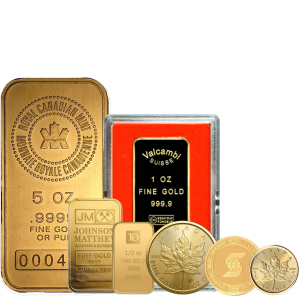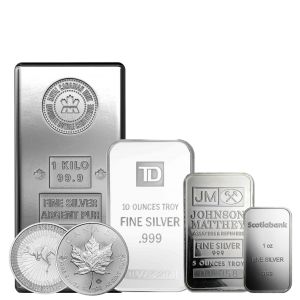

Back
A Technical Guide to Gold Bar Production and Compliance
May 15, 2024
The Method of Refining
Raw Gold: Ore or dore pieces are where gold bars come from. Sort and clean the gold and other metals. Gold ore's surface gets better when it is crushed. Adding cyanide will break down the rock and get the gold out of it.
Smelting: It is heated and mixed with flux to concentrate the gold in crushed gold rock in a kiln. As the melting gold falls, the slag rises and is taken away. This makes gold bars that are 60–95% pure.
Refining Electrolytic: Gold dore bars are broken up in gold cyanide by the electrolysis process. When electricity flows through the solution, gold sticks to the negatively charged cathodes. Pollutants don't stick and sink. Cathodes are turned into bars of 99.5% pure gold. Last Processing The last step is to test the quality of the gold bars. There is a purity, weight, and unique number on a stamp. Gold dealers, jewellers, buyers, and central banks can buy bars after they have been checked for quality.
Investment-grade gold bars need to be refined a lot before they can be sold on the market. Investors and companies all over the world trust gold bars because they are polished, and their quality is checked.
Making Gold Bars and Stamping Them
Bars are made by melting pure gold . Gold is melted down and then shaped into bars. The moulds make bars that are 1 oz, 10 oz , and 100 oz.
Putting gold in moulds is used to harden molten gold. This method makes gold bars that are rough and uneven. Bars are cut out of frames.
Branding and stamping: Gold bars have their weight, purity, and serial number stamped on them so that they can be identified and proven. Bars are made smooth and flat by stamping. Manufacturers generally put their company's name and country on the bar. The marks help identify bars and stop fakes.
Standardization is done by keeping a firm hold on bar weights and purity, such as.999 gold. The assay office of each country checks the quality and weight of gold bars made by private refiners and mints. Because of strict rules and regulations, there can be a global gold metal market where gold bars from different makers can be traded.
By marking and naming, each gold bar is made sure to be real before it is sold on the main gold bullion market. Investors and state banks all over the world trade gold bars that have been stamped.
Certification of the final product: Trading gold bars on the open market needs to be checked out. Certified refiners check samples of gold bars for quality, weight, and purity. The material of the bars is carefully looked at and recorded. Buy or sell gold bars that have been checked.
Security And Fighting Fake
Tamper-proof boxes: Good gold bars come in packaging that can't be changed and show signs of damage after they've been refined. Assay cards or heat-sealed plastic keep bar contents safe and comfort buyers. Private buyers should promise that the refiner's package has not been opened or destroyed.
Unique numbers: Reliable gold bar makers give each bar a unique number. The bar and refiner are linked by a unique number. Gold Buyers should com pare the serial numbers on their bars to those on the assay card or other papers that the seller is selling. Bars that aren't marked can't be checked.
Best practices for gold bar verification and identification convince buyers that the goods they buy are real and of high quality. Reputable refiners spend money on security and fighting imitation to protect their brand and comfort customers.
How to Move, Store, and Give Out Gold Bars
How to Stay Safe: After being made and tested for compliance, gold bars must be safely sent to storage facilities or customers. A lot of gold bars are delivered by armoured trucks with armed guards. GPS and transmission systems keep track of where cars are and how they're doing while they're travelling. The target unloads the gold bars and counts them to make sure they have the right number of bars and ounces. Gold bars are kept in safe, climate-controlled bunkers. Customers get all the gold bars after the samples are checked.










